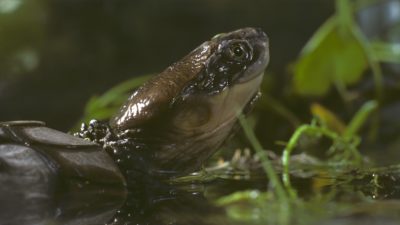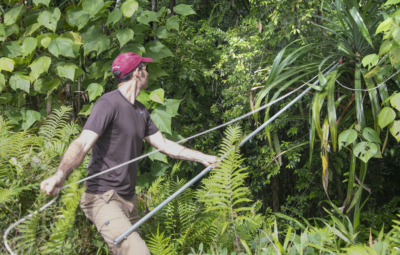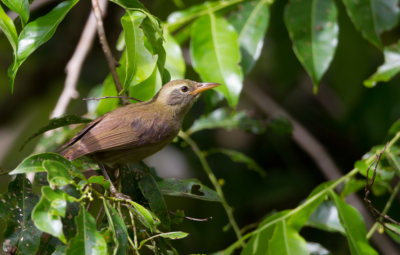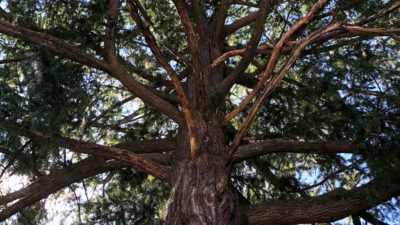Conservationists, ecologist Mark Schwartz wrote nearly three decades ago, faced a looming conundrum: Many species would likely be unable to keep up with the projected pace of climate change and could face extinction as a result. This didn’t pose “an insurmountable conservation problem,” he wrote — people could help species reach places with suitable physical and biological conditions. They might carry endangered animals to habitats cut off by mountains, rivers, or human barriers, for example, or plant endangered trees or shrubs higher up mountain slopes or farther north.
In one sense, these would be ordinary actions. People had been moving species around the world for thousands of years, as farmers and horticulturalists, and out of simple curiosity. But long experience had given conservationists reason to be cautious about taking such actions themselves, Schwartz wrote. The salvation of one species could mean the destruction of another.
Three decades later, people are still arguing over whether the risk of moving species to more favorable conditions outweighs the risk of inaction. This debate has spawned hundreds of scientific papers, media reports, and even side debates, including over what to call the novel conservation practice (which, in this article, will be referred to as “assisted colonization”). It is a debate fueled less by differences of fact and more by differences of philosophy.
In a paper published last month in Science, a group of researchers offered one potential route around this impasse. They propose that at the upcoming Conference of the Parties to the Convention on Biological Diversity, to be held in Kunming, China this October, the signatories agree upon a set of guidelines on assisted colonization which people around the world could use to consistently and explicitly weigh the risks involved in potential assisted colonization projects. While this risk-assessment framework is so far hypothetical, a number of other organizations and governments have published reports and policy documents on assisted colonization in recent years — a suggestion that the controversial conservation technique may finally be descending from the lofty realm of theory into the firmer one of practice.
“Assisted colonization is going to be the only hope for a lot of those species” says one ecologist.
University of Montana conservation ecologist Jedediah Brodie, the paper’s lead author, says he was a latecomer to the debate over assisted colonization. He became interested last summer, while studying the interactions between fruit trees and seed-dispersing animals in Palau, an island nation east of the Philippines. Rising seas and rising temperatures could eventually make Palau’s several hundred low-lying islands inhospitable for many of the species that live there, a high proportion of which are found nowhere else. The bats and pigeons that disperse the figs, breadfruit, and mangosteen relatives that Brodie studied are unlikely to carry all of the trees to safer shores — to mainland Asia, for example — on their own, he says. “I came away thinking, ‘Assisted colonization is going to be the only hope for a lot of those species.’”
The question was, how would you actually go about planning such a cross-border project? During Brodie’s conversations with scientists more versed in the debate, it became apparent that, for all of the discussion of assisted colonization, practical guidance at an international level was scant. “This is something we’ve been talking about for decades, but haven’t really done anything with, in part because it’s still controversial,” he says. “Because of that controversy we don’t have the policy and regulatory frameworks.”
In the article, titled “Global policy for assisted colonization of species,” Brodie and his co-authors argue that the upcoming meeting of the parties to the Convention on Biological Diversity is the best opportunity to set global policy on assisted colonization. At these meetings, representatives of the European Union and the 196 nations that are party to the treaty (which the United States has signed, but not ratified) set conservation goals, which help prioritize spending and help the United Nations set its Sustainable Development Goals.
Brodie and his co-authors suggest that the parties convene a task force to develop guidelines on assisted colonization, which would help people assess which species to focus on; where, when, and how to move them; how to weigh the risks of action and inaction; and how to conduct such actions across international borders. Brodie says his group isn’t advocating assisted colonization in general, only that the international community have a framework by which to judge such actions. “Assisted colonization will be useful in some instances and not others,” he says. “We want there to be an official way for the world to decide when it is warranted or not.”
Ecologist Jedediah Brodie collects specimens of Pandanus aimirikensis, a plant species endemic to Palau, a Pacific island nation threatened by rising seas; the giant white-eye an endangered bird found only in Palau. Jedediah Brodie; Michael Stubblefield / Alamy Stock Photo
One of Brodie’s coauthors on the paper was Schwartz, now a professor of ecology at the University of California, Davis. After laying out the conundrum posed by assisted colonization in his 1992 paper, Schwartz made the first explicit case against the practice, in a 2004 paper arguing against an effort by a group of concerned citizens working to move the endangered Florida torreya tree from its tiny range in the Florida Panhandle farther north into the Eastern U.S.
In that article, Schwartz set forth what would become the standard suite of arguments against the practice: It wasn’t clear — and wouldn’t always be clear — that climate change was indeed the most imminent threat facing the species. Moving species as a conservation method also threatened to undo decades of work to slow the rate of biological invasions, he wrote, either by creating new invaders directly, or simply by confusing the public, giving implicit permission for anyone to move anything, anywhere. Perhaps most fundamentally, he wrote, assisted colonization would mean conservationists were no longer working to restore ecosystems to their condition at a specific period in history. “Without a target, every kind of management, including those that result in lost native species, is arguably a success,” he wrote. “I fear such success.”
Some scientists still share those concerns. University of Tennessee biologist Daniel Simberloff says the authors of the Science paper fall into an old mistake, assuming that the risks of moving species from place to place are something that can be accurately predicted. One of the key lessons of invasion biology, he says, is that a species that seems perfectly innocuous when moved to one place can become a rampant invader in another.
Schwartz’s own stance, though, has softened over the years. Part of the reason, he says, is that the problem of climate change has grown more urgent. Mostly, though, it was that the position came to feel increasingly untenable. People were already practicing assisted colonization, often in ways that Schwartz saw as ill-considered. Along with the Florida torreyas, people have in recent years assisted the colonization of giant sequoias in California, two species of butterflies and a lichen in the United Kingdom, and two species of albatross in Hawaii, to name a few.
Compared to the number of species threatened by climate change, these projects are few, but the number seems sure to grow. “We’re going to have an escalating rate of people being concerned and wanting to take some action,” Schwartz says. “So it’s become more urgent to create the structure for people to be able to evaluate risk.”
“One can balance the benefits of saving species against risks of poor consequences,” says a researcher.
If the Convention on Biological Diversity does set out to create assisted colonization guidelines, it has a number of documents to look to as models. The first, published in 2013, is the International Union for Conservation of Nature’s “Guidelines for Reintroductions and Other Conservation Translocations.” Along with assisted colonization, the guidelines address reintroductions of species into places they formerly existed, such as a recent effort to reintroduce wood bison into Alaska; reinforcement of existing populations; and ecological replacements, in which conservationists replace one formerly present species with another of similar ecological function, such as the introduction in the 2000s of two species of tortoises from Madagascar and the Aldabra Atoll to the island of Mauritius, whose five native tortoises have gone extinct.
The document outlines what people thinking about performing a conservation translocation should consider, including the climate and habitat requirements of the species, the welfare of the individuals involved, genetic considerations, and regulatory compliance. “We believe that through good science and structured decision-making one can balance the benefits in terms of saving species from extinction against risks of poor consequences,” says Axel Moehrenschlager, an ecologist who chairs the IUCN Conservation Translocation Specialist Group and is a co-author on the Science paper.
Other potential models include the “Scottish Code for Conservation Translocations,” published by Scotland’s nature agency in 2014, and a U.S. National Park Service report published earlier this year. Already, Park Service employees have assisted the colonization of bull trout into several lake and stream systems in Glacier National Park in an effort to protect them from invasive, non-native lake trout.
But none of these frameworks carry the weight that guidelines from the Convention on Biological Diversity (CBD) would, says Susan Lieberman, vice president of international policy at the Wildlife Conservation Society and another co-author on the Science paper. “If the CBD adopts something, it is therefore adopted by governments, and it has more authority,” she says. An international set of guidelines on assisted colonization would help countries draft their own guidelines and would aid in cases where it may be necessary to move species across national borders.
Guidelines from the CBD would also make more space for discussion, says Sarah Dalrymple, a Liverpool John Moores University plant ecologist, who helped draft both the IUCN and Scotland’s managed relocation guidelines. She says the fierceness of the debate has made even discussing potential experiments difficult. An official policy, she says, would “allow people to feel more like they could explore the potential for assisted migration, without having to put the head above the parapet and risk being shot down.”
Nicola Mitchell, a conservation physiologist at the University of Western Australia in Perth, agreed. She led a group that conducted an assisted colonization experiment with the endangered western swamp turtle, introducing captive-raised turtles into habitats several hundred kilometers south of their natural range north of Perth, on Australia’s western coast. At one of the experimental sites, the researchers found that the turtles’ growth rate was slower than that of the turtles in their natural range — an indication, she says, that those sites were still too cold, and a detail that could only be learned through experimentation. “There’s an awful lot of academic head-scratching about assisted colonization, but we’re not really seeing anyone give it a go,” she says. “It is the actual trials we are doing that are really telling us more.”
The debate over assisted colonization is evidence that many conservationists and biologists remain stuck in an old paradigm, in which any human intervention in nature is undesirable and fraught, says Cuauhtémoc Sáenz-Romero, a forest geneticist at Universidad Michoacana de San Nicolás de Hidalgo. Sáenz-Romero has conducted experiments planting Mexican pines and firs upslope of their natural range in the mountains of central Mexico (a project also designed to aid overwintering monarch butterflies) and aims to do the same with several Mexican spruces in the future. Many of his frequent scientific collaborators work in forestry. In that industry, he says, where future profits depend on foresters planting trees well-suited to the local conditions, assisted colonization is quickly becoming a matter of course. Sáenz-Romero says it’s time for conservationists to also take a pragmatic look at the practice.
“Humans have disrupted the ecology of the entire planet,” he says, raising the amount of carbon dioxide in the atmosphere to levels not seen for millions of years. Assisted colonization may be an extraordinary measure, he says, but in such times, “we have to look at extraordinary things.”
A key mistake is assuming that the risks of moving species can be accurately predicted, says a skeptic.
Not everyone agrees that assisted colonization risk-assessment guidelines are useful, or even possible. “I’m not offended by saying we should try to assess the risk,” says the University of Tennessee’s Simberloff. But he thinks the authors of the Science paper do not fully appreciate how difficult it is to predict the effects of moving species.
He also disagrees with the authors’ suggestion that, in areas where humans have assisted a species’ colonization, that species might be deemed “neo-native.” The suggestion is meant to reconcile a conflict with many national and international laws forbidding the introduction of “alien” species into protected natural areas. “People for years have been trying to redefine introduced species as ‘native’ according to some ad-hoc criterion,” Simberloff says—a slippery slope to not being concerned with biological invasions. While many scientists worry that climate change will cause the extinction of many species, invasive species are currently a bigger driver of extinction.
The U.S. Park Service has assisted the colonization of bull trout into lake and stream systems in Glacier National Park. USGS
Schwartz also remains mostly opposed to assisted colonization, but he thinks it bears further discussion. He notes that assisted colonization is the simplest of a new suite of controversial conservation techniques, among them de-extinction — using ancient genetic material to resurrect extinct species — and assisted evolution, or using genetic engineering to better equip a species against heat, disease, or other existential woes. While the Conference on Biological Diversity has so far given no indication it will take up the question of assisted colonization, the authors of the Science paper are optimistic it will. If the international conservation community can find a way to navigate this debate, Schwartz says, it will provide a road map for other, harder questions to come.
“If we can get our mitts around assisted colonization and emerge with some policies for what guides our actions and decisions,” he says, “I think we’d be in a better place to manage these more complicated issues.”







